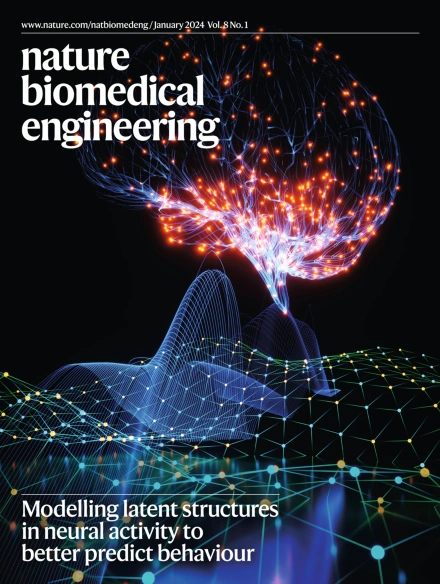在小鼠模型中,使用纳米crispr支架敲除HO-1基因抑制转移。
IF 26.8
1区 医学
Q1 ENGINEERING, BIOMEDICAL
引用次数: 0
摘要
光动力疗法诱导的免疫原性细胞死亡有可能产生自体癌症疫苗。然而,肿瘤的先天或进化的遗传耐受性限制了这种方法的有效性。在这里,我们报道了一种基于使用纳米crispr /HO-1支架对血红素加氧酶-1 (HO-1)进行基因编辑的可遗传纳米平台的开发。该平台有效地消除了肿瘤中对活性氧的遗传耐受性,而不会对主要免疫细胞造成不良影响,从而对自体疫苗产生强大而持久的免疫反应。这种纳米crispr支架可以遗传对肿瘤后代的易感性,将异质恶性肿瘤转化为活性氧物种敏感表型。此外,NanoCRISPR支架内的精氨酸接片聚乙烯亚胺模块和CpG基序通过放大抗原生成、促进T细胞增殖和激活癌症模型中的适应性免疫反应来增强癌症免疫周期。当与αPD-L1抗体联合使用时,基于NanoCRISPR支架的可遗传纳米平台在体内黑色素瘤小鼠模型中引发抗肿瘤免疫和持久免疫记忆。这种联合疗法唤起了对肿瘤再挑战的强烈免疫记忆,为癌症疫苗方案的合理发展提供了见解。本文章由计算机程序翻译,如有差异,请以英文原文为准。
A HO-1 gene knockout using a NanoCRISPR scaffold suppresses metastasis in mouse models.
Photodynamic therapy-induced immunogenic cell death has the potential to generate autologous cancer vaccines. However, the innate or evolved genetic tolerance of tumours limits the efficacy of this approach. Here we report the development of a heritable nanoplatform based on gene editing of haem oxygenase-1 (HO-1) using a NanoCRISPR/HO-1 scaffold. This platform effectively eliminates genetic tolerance to reactive oxygen species in tumours without causing adverse effects on main immune cells, resulting in a robust and durable immune response to autologous vaccine. This NanoCRISPR scaffold can inherit susceptibility to tumour progeny, transforming heterogeneous malignancies into a reactive oxyen species-sensitive phenotype. Moreover, the arginine-grafted polyethyleneimine module and CpG motif within the NanoCRISPR scaffold enhance the cancer-immune cycle by amplifying antigen generation, promoting T cell proliferation and activating adaptive immune response in cancer models. When combined with an αPD-L1 antibody, the NanoCRISPR scaffold-based heritable nanoplatform elicits antitumour immunity and durable immunological memory in vivo melanoma mouse models. This combinational therapy evokes a strong immune memory against tumour rechallenge, providing insights into the rational development of a cancer vaccine regimen.
求助全文
通过发布文献求助,成功后即可免费获取论文全文。
去求助
来源期刊

Nature Biomedical Engineering
Medicine-Medicine (miscellaneous)
CiteScore
45.30
自引率
1.10%
发文量
138
期刊介绍:
Nature Biomedical Engineering is an online-only monthly journal that was launched in January 2017. It aims to publish original research, reviews, and commentary focusing on applied biomedicine and health technology. The journal targets a diverse audience, including life scientists who are involved in developing experimental or computational systems and methods to enhance our understanding of human physiology. It also covers biomedical researchers and engineers who are engaged in designing or optimizing therapies, assays, devices, or procedures for diagnosing or treating diseases. Additionally, clinicians, who make use of research outputs to evaluate patient health or administer therapy in various clinical settings and healthcare contexts, are also part of the target audience.
 求助内容:
求助内容: 应助结果提醒方式:
应助结果提醒方式:


